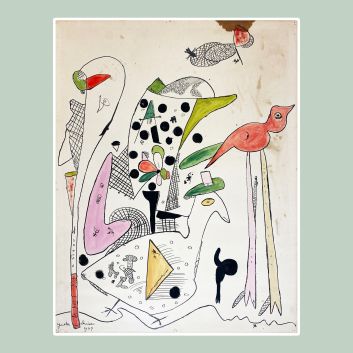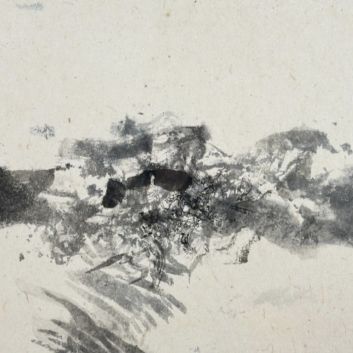Rating and value of works, drawings, paintings by Hans Hartung
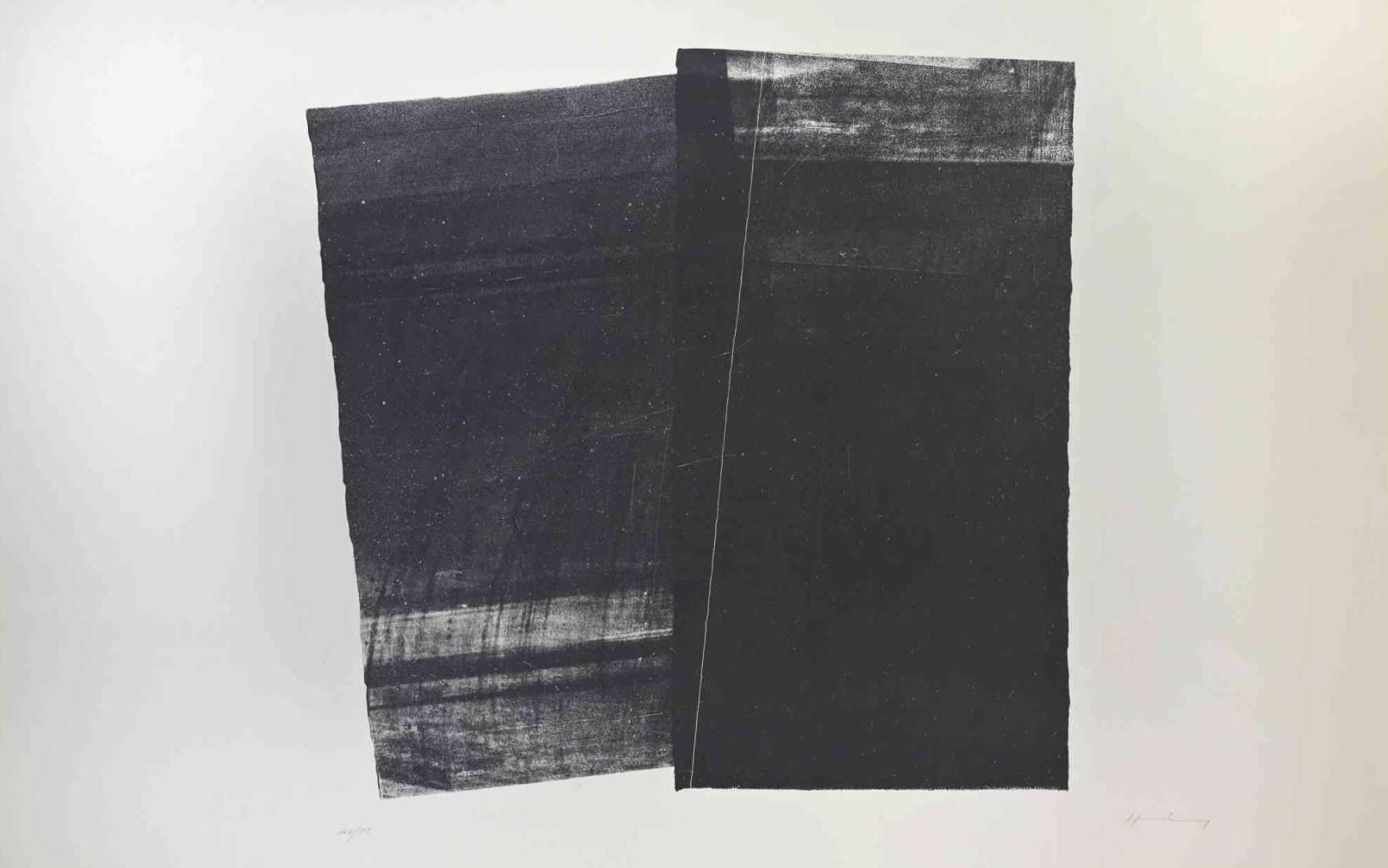
German painter, photographer and architect Hans Hartung (1904-1989) is one of the most important exponents of abstraction and a precursor of spontaneous experimental techniques.
Also a member of the École de Paris, Hans Hartung's technique encourages spontaneity of gesture.
If you own a work by or based on the artist Hans Hartung and would like to know its value, our state-approved experts and auctioneers can help you.
Our specialists will carry out a free appraisal of your work, and provide you with a precise estimate of its current market value.
Then, if you want to sell your work, we'll point you in the right direction to get the best possible price for it.
Artist's rating and value
Hans Hartung produced a great deal throughout his career. However, his most popular period began in the 50s.
His international renown opened the doors of numerous museums in Paris and New York. Today, Hans Hartung remains highly regarded and is a sure bet on the art market.
A work signed by the artist can fetch millions of euros at auction, as demonstrated by his oil on canvas T1956-13, which sold for over 2 million euros at Sotheby's in 2017.
Order of value from the most basic to the most prestigious
Technique used | Results |
|---|---|
From €5 to €11,000 | |
Photography | From €155 to €5,700 |
Drawing - watercolor | From €350 to €179,890 |
Oil on canvas | From €250 to €2,250,000 |
Response in less than 24h
The artist's works and style
Style and technique of the artist Hans Hartung
Hans Hartung's works and style quickly became known for their unique abstract language,centered on patches of paint that he described as "calculated spontaneity".
His most famous oils, marked by powerful contrasts, blend colorful backgrounds with intense black or brown flat tints.
Hartung also uses the scratching technique to create a striking industrial effect on his canvases, reinforcing the raw energy that emanates from his compositions.
This technical approach, combining precision and impulse, gives his works an unrivalled visual dynamic.
At the same time, he produced numerous pastel and pencil drawings in which he applied the same spontaneous techniques, skilfully playing with color contrasts to accentuate the intensity of his abstract forms.
Always in search of experimentation, the German artist also excels in abstract photography, a medium he approaches with the same boldness, asserting his innovative visual approach through unprecedented textures and lighting effects.
Hartung, in his constant quest for innovation, constantly pushed back the frontiers of abstraction, consolidating his status as a pioneer of modern art.
Stylistically, he is close to lyrical abstraction artists such as Georges Mathieu, Zao Wou-Ki, Pierre Soulages and Jackson Pollock.
Hans Hartung, father of Tachism
The life of Hans Hartung
Hans Hartung was a French painter of German origin, born in Leipzig on September 21, 1904. After studying at the Beaux-Arts in Munich, Hartung left to explore Europe with his wife, the Norwegian painter Anna-Eva Bergman, before settling permanently in Paris.
Their careers were marked by the rich European artistic exchanges of the time. Witnessing the rise of Nazism, Hans Hartung, deeply opposed to the regime, volunteered to fight in 1939.
Arrested like many other Germans in France, he suffered the horrors of detention.
After his liberation, driven by an unshakeable sense of duty, he joined the Foreign Legion, where he lost his right leg in a combat wound, an ordeal that strengthened his determination and artistic commitment.
Throughout his career, Hans Hartung received many prestigious distinctions, including the Légion d'Honneur and the Commandeur des Arts et des Lettres, in recognition of his major contribution to abstract art.
As a child, he was already fascinated by photography and astronomy, two passions that nourish his work and shine through in certain plays of light and celestial compositions in his paintings.
As a child, Hartung taught himself to paint, reproducing and simplifying classical works, before turning to a more daring approach centered on color.
Inspired by masters such as Rembrandt, Goya and the German Expressionists, he quickly developed his own visual language through watercolors and abstract canvases, including the famous Tâches d'encre, which became emblematic of his style.
Always in search of innovation, Hartung turned to acrylic paint, exploring new textures with unusual tools such as branches, combs and brooms, introducing a unique gestural quality to his work.
In 1968, he and his wife settled in Antibes, in a house-workshop he had designed himself, a place conducive to creation and relaxation.
It was here that he continued to work until his death in 1989, leaving behind him a considerable legacy in abstract art, marked by a constant quest for freedom and expression through ever more audacious forms and techniques.
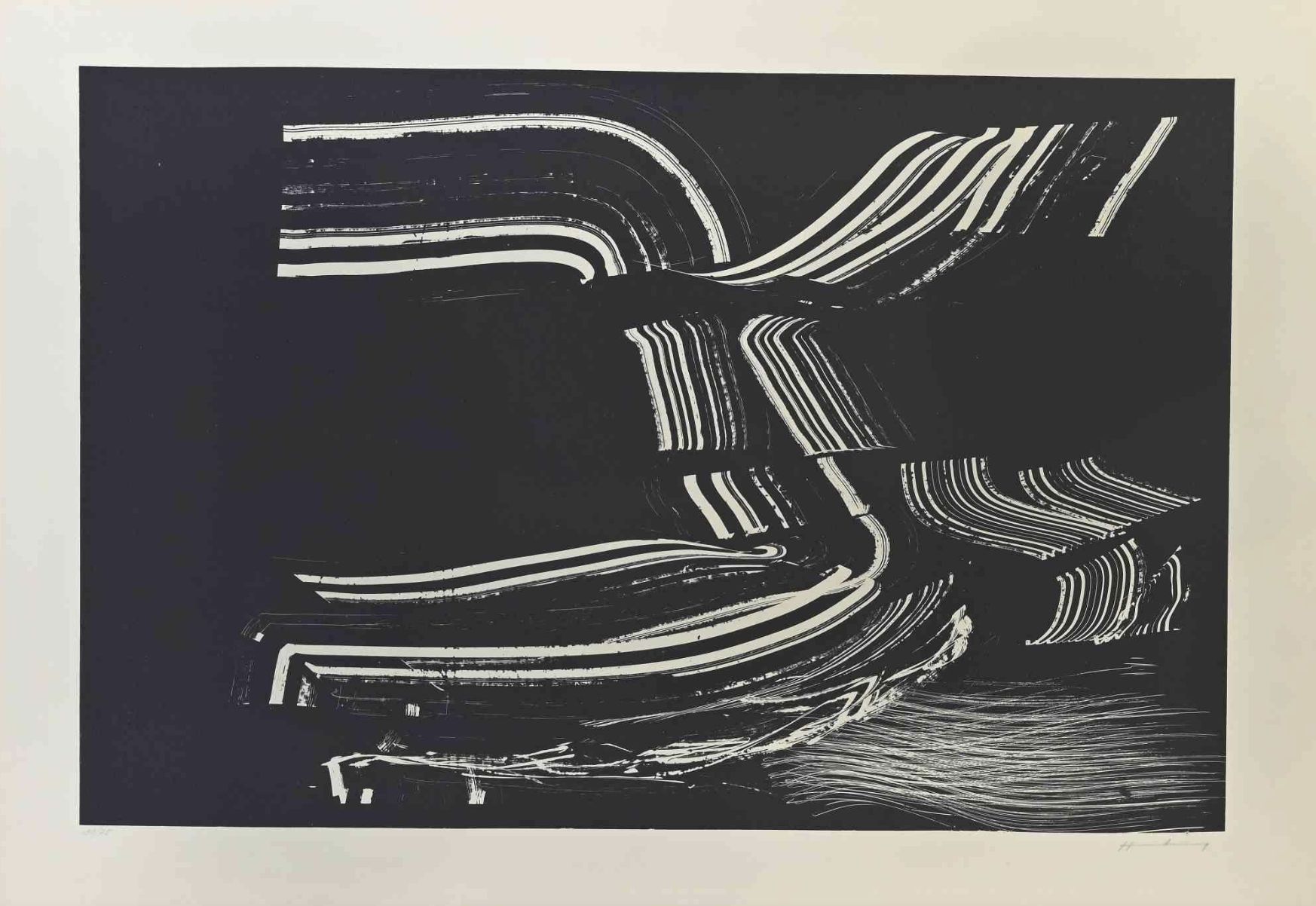
Focus on T. 1955-33, Hans Hartung, 1955
This work by Hans Hartung, with its intense gestures and marked contrasts, perfectly embodies the spirit of his work in the last years of his life. Here we find the essence of his approach: a constant dialogue between movement and silence, between strength and lightness.
The broad black strokes, drawn with a certain vigor, cut across the canvas like flashes of matter, recalling the primordial energy that inhabits the artist.
Each brushstroke seems to be the fruit of a spontaneous, almost violent gesture, but at the same time perfectly mastered, reflecting the inner tension that characterizes all his work.
The blue-gray background, blurred and out of focus, acts like a silent jewel box. It softens the agitation of the black strokes, giving the whole an almost cosmic depth. Here we sense Hartung's fascination with space and immensity, the quest for the infinite that has accompanied him from the very beginning.
This background, with its subtle variations, is more than just a support. It dialogues with the dark lines, as if absorbing some of their energy, creating a fragile balance between the material and the immaterial.
Black lines of varying thickness seem to spring from the canvas. Their movement is curved, sinuous, almost organic, as if it were a breath, a beat, a vital impulse. Here, Hartung succeeds in capturing the essence of gesture, freezing in matter what would otherwise be ephemeral.
The viewer feels this tension: the lines seem to want to leave the frame, to continue their movement beyond the limits imposed by the canvas.
This pictorial gesture, so typical of Hartung, reveals a true liberation of form, a quest for pure expression, devoid of all artifice. The tools he uses, sometimes branches or brooms, are palpable here in the texture of the lines, their irregularity, their brutality.
The contrast between these black lines and the background is accentuated by the touches of light that seem to radiate from within the canvas. This subtle, diffused light brings an unexpected softness.
It is reminiscent of the play of light and shadow that fascinated Hartung from childhood, particularly through his interest in photography and astronomy. Here, the diffuse light seems to emanate from the canvas itself, as if the black lines were merely shadows cast by an invisible light source.
This subtle interplay of light and shadow gives the work an almost spiritual dimension, an impression of suspended movement in time and space.
The composition as a whole is balanced, despite the apparent anarchy of the strokes. Hartung masters his gesture to perfection, creating an almost musical harmony between the different elements of the work.
In this painting, we perceive a quest for rhythm, for breathing, each black line becoming a note in a visual score. This relationship with rhythm is essential to Hartung's work, as he saw painting as a dance, an incessant movement between artist and canvas.
In conclusion, this work by Hans Hartung bears witness to his unwavering commitment to freedom of gesture and expression.
She captures the raw yet controlled energy, the tension between strength and delicacy that makes her art so unique.
Through the simplicity of his means, Hartung succeeds in expressing complex emotions, a vision of the world where art becomes the reflection of existence itself, between movement and immobility, shadow and light.
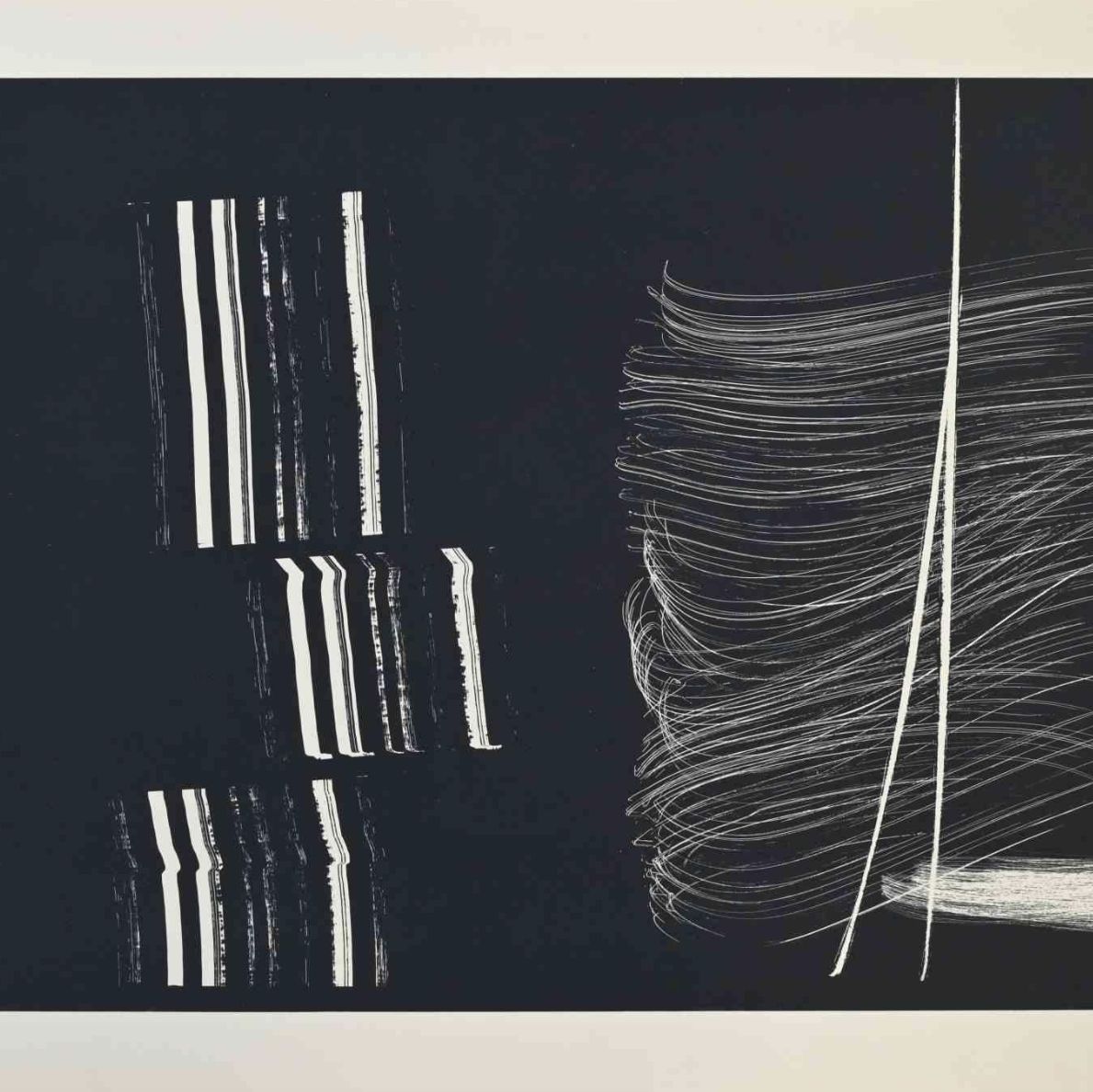
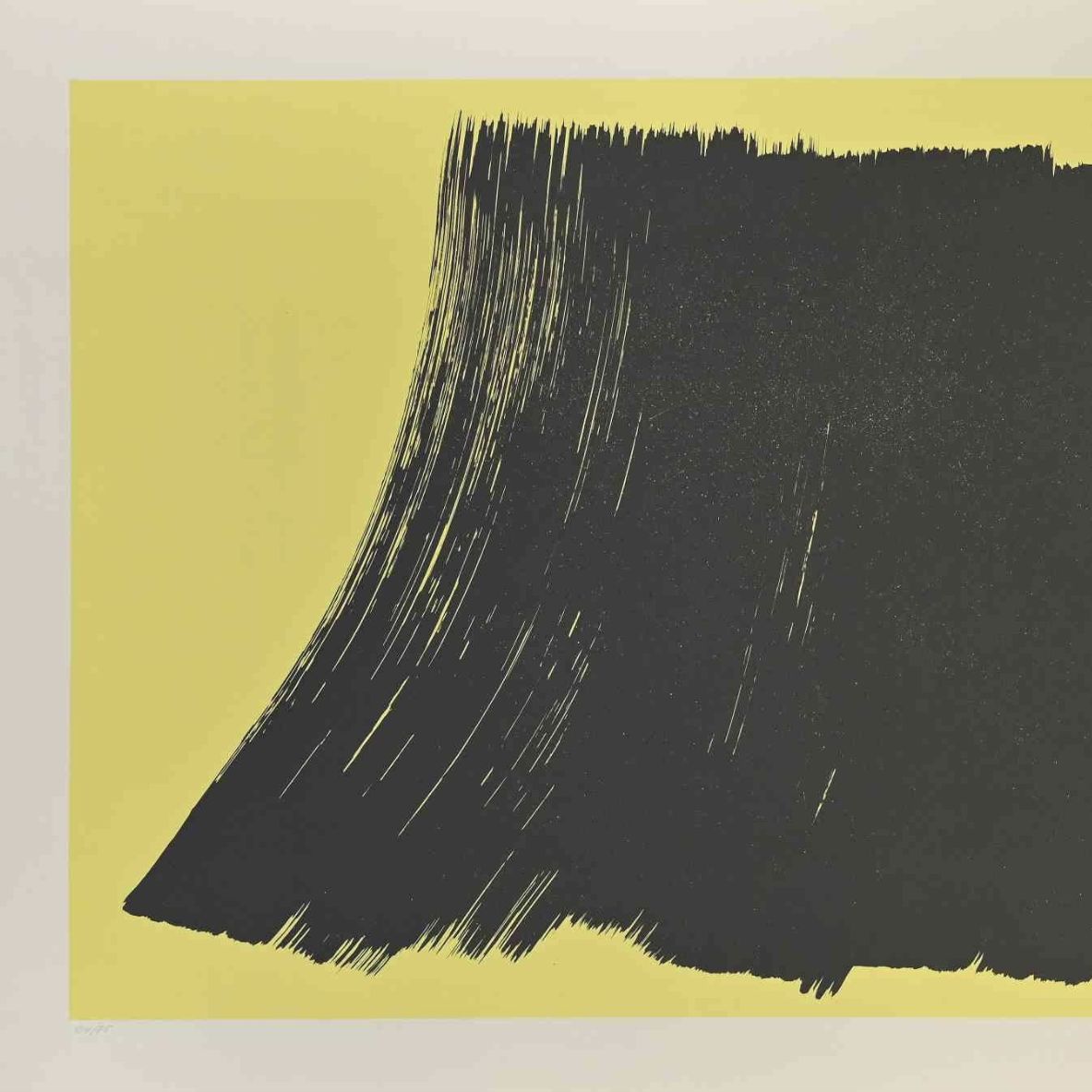
Hans Hartung's imprint on his time
Hans Hartung's imprint on abstract art is considerable and enduring. His bold exploration of color and form marked a generation of artists.
By integrating innovative techniques and a variety of tools into his practice, Hartung has created a unique gestural quality that shines through in his works. His famous Tâches d'encre testify to his ability to transform emotions into visual forms, establishing a dialogue between artist and viewer.
The artist also played a key role in promoting lyrical abstraction, a movement that values personal expression through color and gesture.
His influence extends beyond his own creations, as many contemporary artists are inspired by his quest for freedom and his commitment to breaking with convention.
Hartung drew connections between his personal experience, marked by hardship, and his artistic vision, leaving behind a rich legacy that continues to nourish reflections on abstract art today.
His studio home in Antibes, where he created until his death in 1989, remains a symbol of his dedication to creation and experimentation.
His signature
Not all Hans Hartung's works are signed.
Although there are variations, here is a first example of its signature:

Appraising your property
If you own a work by Hans Hartung, we invite you to request a free appraisal by filling in our online form.
A member of our team of experts and certified auctioneers will contact you to estimate the market value of your Hans Hartung work.
If you are considering selling your work, our specialists will also guide you through the various alternatives available to obtain the best possible price, taking into account market trends and the specific features of each work.
Response in less than 24h
Related topics
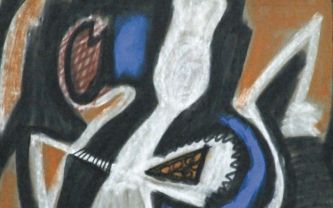
Rating and value of works, drawings, paintings by Jean Miche...
Jean Michel Atlan is a twentieth-century painter of lyrical abstraction, whose drawings and oil paintings are highly prized at auction.
Read more >
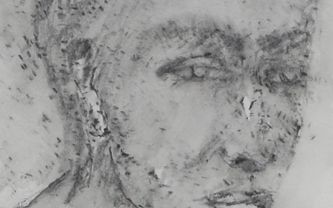
Rating and value of paintings, drawings and sculptures by Akbar Pa...
Akbar Padamsee is a 20th-century Indian contemporary artist who has produced works that are highly rated and sought-after on the auction market.
Read more >
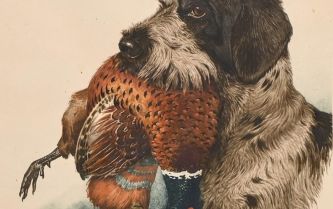
Cote et valeur 2024 des tableaux, dessins, peintures de Bori...
Boris Riabouschinsky is a Russian painter and draughtsman who has produced works that are highly valued at auction.
Read more >
Secure site, anonymity preserved
State-approved auctioneer and expert
Free, certified estimates
